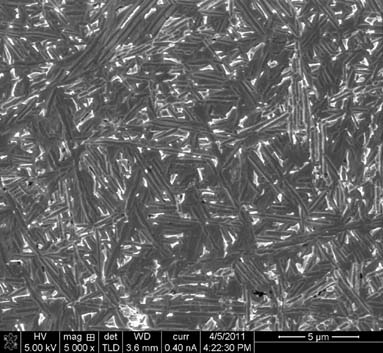Due to complicated production processes and machining, titanium is about ten times more expensive than conventional steel. Powder metallurgy (PM) has been regarded as a viable and promising approach for reducing the cost of Ti fabrication because of the near-net-shape capability of PM processes. To achieve high density and low oxygen titanium powder is typically sintered in high vacuum.
There are two general kinds of titanium PM approaches: the blended elemental (BE) and pre-alloyed (PA) methods. PA products have better mechanical properties than BE products; however, the cost associated with producing them is much higher. Therefore, BE is still the preferred cost-effective method. In order to eliminate porosities, reduce grain sizes and improve the mechanical properties of BE products, post-sintering thermal or cold working processes are needed. Another option for removing residual porosities is to use post-sintering high pressure processes. Unfortunately, both processes add extra cost to the BE parts, reducing the cost advantages of this method.
 In recent years, an alternative BE PM Ti technique emerged which is able to produce near pore-free BE parts directly. This technique employs vacuum sintering of titanium hydride (TiH2) powders instead of Ti metal powder. During sintering, TiH2 will dehydrogenate at moderate temperatures prior to being sintered at high temperatures in vacuum. Prof. Zhigang Zak Fang and co-workers at the University of Utah, USA, have now written a study on this novel HSPT process (HSPT: hydrogen sintering and phase transformation).
In recent years, an alternative BE PM Ti technique emerged which is able to produce near pore-free BE parts directly. This technique employs vacuum sintering of titanium hydride (TiH2) powders instead of Ti metal powder. During sintering, TiH2 will dehydrogenate at moderate temperatures prior to being sintered at high temperatures in vacuum. Prof. Zhigang Zak Fang and co-workers at the University of Utah, USA, have now written a study on this novel HSPT process (HSPT: hydrogen sintering and phase transformation).
The researchers produced Ti and Ti alloys with near-full density and ultrafine grain sizes in an as-sintered state. They achieved near-porosity-free ultrafine microstructures by sintering under atmosphere with controlled hydrogen partial pressure, and then subjecting the material to eutectoid transformation and dehydrogenation at moderate temperatures.
The study of Fang and co-workers shows the potential for low-cost manufacturing of powder metallurgy Ti materials with superior mechanical properties. The refined microstructure has potentially many advantages over coarse lamellar structure of conventional sintered Ti materials from the standpoint of mechanical properties. Studies of wrought Ti materials have shown that such refined microstructure leads to improved tensile and fatigue properties as compared to the coarse lamellar microstructure. The benefits of the refined microstructure as well as the flexibility of being able to further engineer the microstructure from the as-sintered state are, however, yet to be investigated.

















